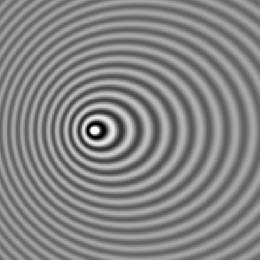Doppler Effect
 When a wave source and observer move relative to each other the observed frequency and length of the wave, changes. This is known as the Doppler effect, and is named after the 19th Century Austrian physicist, Christian Doppler.
When a wave source and observer move relative to each other the observed frequency and length of the wave, changes. This is known as the Doppler effect, and is named after the 19th Century Austrian physicist, Christian Doppler.
What's that I hear....?
It may be easier to think of the Doppler effect in terms of sound waves - we hear the Doppler effect quite often in everyday life, but it may not have been obvious to us at the time that what we were hearing had a name! If you've ever heard a vehicle with a siren blaring (such as a police car, ambulane or fire engine) then you have probably heard the Doppler effect. As the vehicle moves towards you, the frequency of the siren will be higher; then, as it moves past you and away, the frequency of the sound decreases.
![]()
Listen to the Doppler effect here<.
The Doppler effect is also shown in the animation below - as the car moves to point A, the sound waves (shown as the pink lines) become bunched up in the direction the car is travelling in. If you were to stand at point A, you would hear the frequency (pitch) of the car increase as it moves towards you. If you were standing at point B, as the car moves away from you, the frequency of the waves decreases, so you would hear the pitch of the car decrease aswell.

Shedding some light on the Doppler effect<
Although in everday life we may be familiar with the Doppler effect with sound waves, it also occurs for light waves, where it is known as redshift. This is explained in more details in the redshift section<.